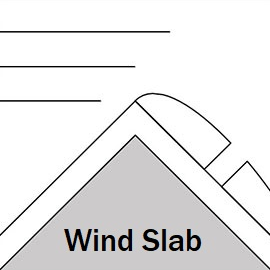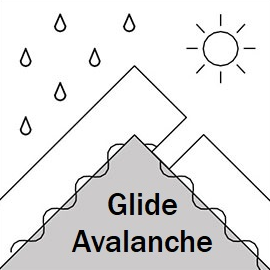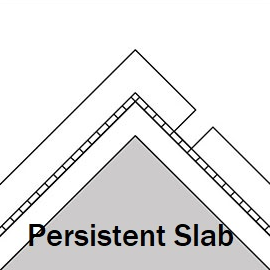Gudauri
Natural avalanches are unlikely, human-triggered avalanches are possible. Small avalanches in specific areas, or large avalanches in isolated areas.
Windslabs exist on NE and E aspects but they are strengthening. The cold temperatures have been weakening snow layers in some areas. Areas of shallow snow (<1 m) at high elevations in rocky areas and near ridgelines should be approached with caution. Glide avalanches are still active despite the cold temperatures.
Forecast issued at: 16 January 2024 23:00
Forecast valid until: 18 January 2024 23:00
Forecaster: Manu Greer
High Alpine
> 2600m
2 Moderate
Heightened avalanche conditions on specific terrain features. Evaluate snow and terrain carefully; identify features of concern.
Alpine
2000m - 2600m
2 Moderate
Heightened avalanche conditions on specific terrain features. Evaluate snow and terrain carefully; identify features of concern.
Sub Alpine
< 2000m
1 Low
Generally safe avalanche conditions. Watch for unstable snow on isolated terrain features.
Avalanche Problems
Wind Slab

Windslabs have formed above 1800m on NE and E aspects. They could still be unstable for the next couple of days. Be cautious on wind-loaded slopes below ridges and roll-overs or where you see build-ups or 'pillows' of harder snow on steep slopes.
| Sensitivity | The specific avalanche problem type is difficult to trigger with a human rider. |
| Distribution | Specific areas, with common characteristics. Evidence for instabilities exists, but it is not obvious and finding it requires careful observations. |
| Time of Day | All day |
| Trend | Improving |
| Confidence | High |
Glide

Even with the very cold temperatures we have had, glide cracks and full-depth glide avalanches are still active. They are common around this area, and will be with us for the rest of the season. These avalanches can release randomly on all aspects, even at night, although rapid warming makes them more likely. Do not stop under steep areas if there are cracks above you. Remember that new snow or wind-drifting can disguise these cracks.
| Sensitivity | The specific avalanche problem type is difficult to trigger with a human rider. |
| Distribution | A few, isolated locations; evidence for instabilities is rare and hard to find. |
| Time of Day | All day |
| Trend | No change |
| Confidence | High |
Persistent Slab

Weak layers associated with melt-freeze crusts or density changes have been found in a couple of spots recently, and the cold temperatures will be making these layers weaker. These weaknesses probably need a large load to set them off, although they now have more snow above them which is adding weight. Probably only found in isolated areas, although there is still uncertainty about this, and we need more information.
| Sensitivity | The specific avalanche problem type is difficult to trigger with a human rider. |
| Distribution | A few, isolated locations; evidence for instabilities is rare and hard to find. |
| Time of Day | All day |
| Trend | Deteriorating |
| Confidence | Moderate |
Recent Avalanches and Snowpack
Avalanche Activity:
16th January - Skier triggered size 1 wind slab, 2500m, NE aspect Milioni valley, 20cm deep, 20m wide, ran 5m off a steep bank.
13th and 14th January - A few new glide slabs reported, up to size 2, various aspects below 2500m.
12th January - skier triggered windslab, size 1, Kobi valley below the resort, NE, 2350m, 15cm deep, 20-30m wide.
11th January - multiple size 1 - 2 storm and wind slabs seen on E, NE and S aspects, 2200 - 3000m, Chrdili, Khada and Lomisa - Miketi ridge. New glide slabs also observed.
Snowpack:
Strong W and SW winds on the 12th and 13th formed windslabs on and NE and E aspects, more of a problem above 2000m. More SW wind on 15th created more slabs in NE aspects. Sheltered areas lower down hold better snow but there is a temperature crust below about 1800m. Although still a relatively stable snowpack, the recent cold temperatures have been weakening (faceting) some lower-density layers, and the surface is growing feathery hoar crystals (a future weak layer when buried). Weak, faceted snow can be found in shallow rocky areas near ridges at higher elevations, and a melt-freeze crust with facets above it was found on an E aspect at 2970m. Whumphing was reported from Lomisa area, NE aspect, 2100m.
Check recent profiles at snowpilot.org
Weather
Very cold temperatures over the last few days, with strong W/SW winds on the 12th / 13th and again on 15th.
Forecast: Temperatures rising on Wednesday with a daytime freezing level of 1850m and 1500m on Thursday. A mix of sun and cloud next 2 days, Light to moderate W / SW winds Wednesday with light and variable winds Thursday.
Disclaimer
Our avalanche forecasters are internationally qualified and experienced professionals, and data is provided by skilled observers. We encourage you to make your own observations and decisions, without relying solely on our forecast, since any forecast is a generalised 'best guess', and in certain cases it might be inaccurate. We can not be held liable for any actions you take in the backcountry that may result in injury, loss or death.